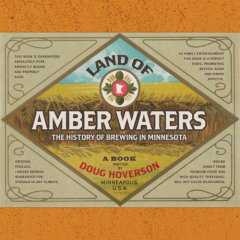 For more about what this is part of look here.
For more about what this is part of look here.
Alan McLeod has been writing about beer at A Good Beer Blog since 2003, “allowing the world to follow the highs and lows of his beery education in real time.” In addition to writing a few articles for trade magazines, this year he was asked to join in the writing of “Beer & Philosophy,” contributing a chapter entitled “Beer and Autonomy” that asks one question: why the heck is the law of beer like it is? In the rest of his life he is dad and husband, foster dad and sports fan and in-house municipal lawyer in just about that order.
In case you forgot, the questions are: If you could invite four people dead or alive to a beer dinner who would they be? What four beers would you serve?
It’s a funny thing about me and all this writing I’ve done about beer as, while it is as convivial a thing in life there is, for me it is a bit of a solitary obsession – me, my computer and a cold room in the basement filled with beer. If I am honest, my interests and influences are more English than North American but I seem to be far more fascinated by the great craft beers of America than anything I have had from elsewhere. That may be the classic Canadian compromise.
1. David Line. This 1960s-70s star of the UK home brewing scene was my introduction to making my own beer and appreciating the great beers out there waiting for me. I find the pre-Jacksonian, pre-CAMRA era of beer writing refreshing in that there was much individuality but no hint of snobbery. Recipes were as likely to be for a beet beer as an authentic imperial stout on the wood and the writing was plain. Line’s writings speak of a genial soul, happy to teach and happy not to be that worried about modern concerns for weekly units or extreme beer. I think he would make an excellent table companion.
Beer: cask London Pride, circa 1978, his desert island beer according to his Brewing Beers Like Those You Buy published in that year.
2. Timothy Finn: author of the 1975 book Pub Games of England. I have this idea that drinking beer was more of a side aspect to the life of an English pub compared to the other activities that went on. Being able to go to a pub and hurl massive round wooden cheese at stout pins in a game of London Skittles or playing an elegant if mantis-like game of lawn billiards would surely over-whelm the finer points of the chosen malt or hop in this bitter or that.
Beer: local ordinary bitter on cask, a 3.2% drink that would leave the lawn billiards cue steady.
3. Martyn Cornell. I wanted to pick one contemporary beer writer and I could have picked any one of many but I picked Martyn due to his incredible obsession to both detail and accuracy. His blog, The Zythophile, displays a commitment to drilling down to the actual while following stories not covered by the pack. I wonder how much Line and Finn would be able to teach him?
Beer: I have no idea but maybe a good thick 1700s West Country white beer as a stand alone first course would get the conversation going.
4. The me of 1985 when I was 22. Fresh out of undergrad I think I recollect that I knew a bit about beer but I was too obsessed with the nightlife in Halifax to take advantage of the opportunities to the point that when I went to Belgium in 1986, I stuck to Guinness. Sad. One evening of Line, Finn and Cornell would have given the him that was me a great head start in this interest of mine.
Beer: Just one draft Keith’s followed by a range of Belgian dubbels just to teach the ignorant wee mopey bastard good from bad.
 For more about what this is part of
For more about what this is part of 
 For more about what this is part of
For more about what this is part of  Before jumping into a bookish week here — reviews plus the requisite holiday suggestions — a few beer links to kick start your week. Don’t forget that its ends with The Session #10:
Before jumping into a bookish week here — reviews plus the requisite holiday suggestions — a few beer links to kick start your week. Don’t forget that its ends with The Session #10: